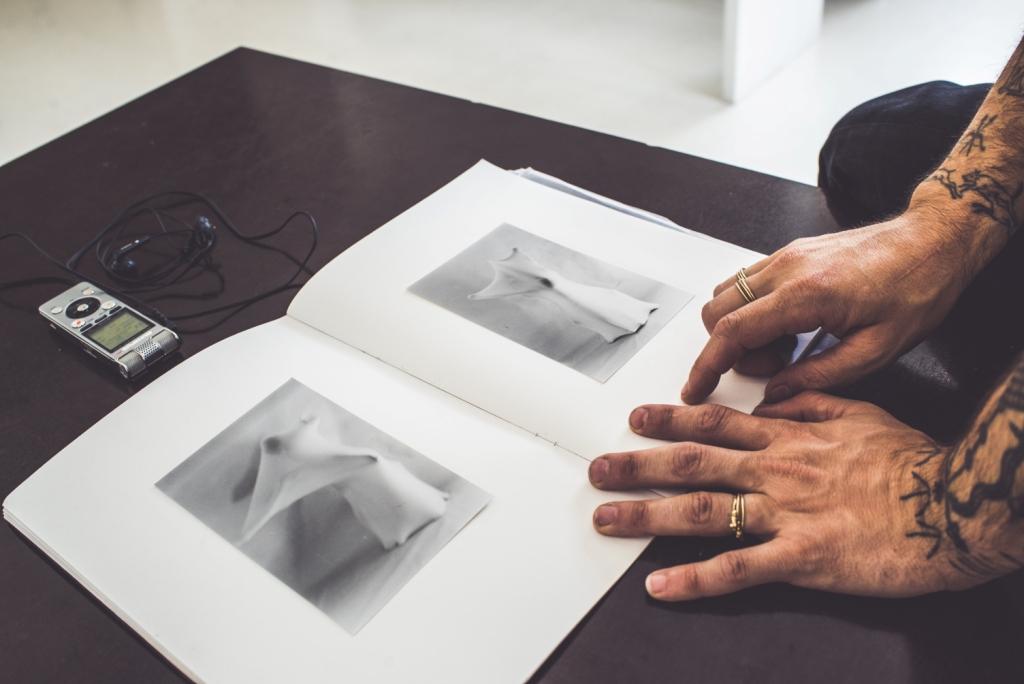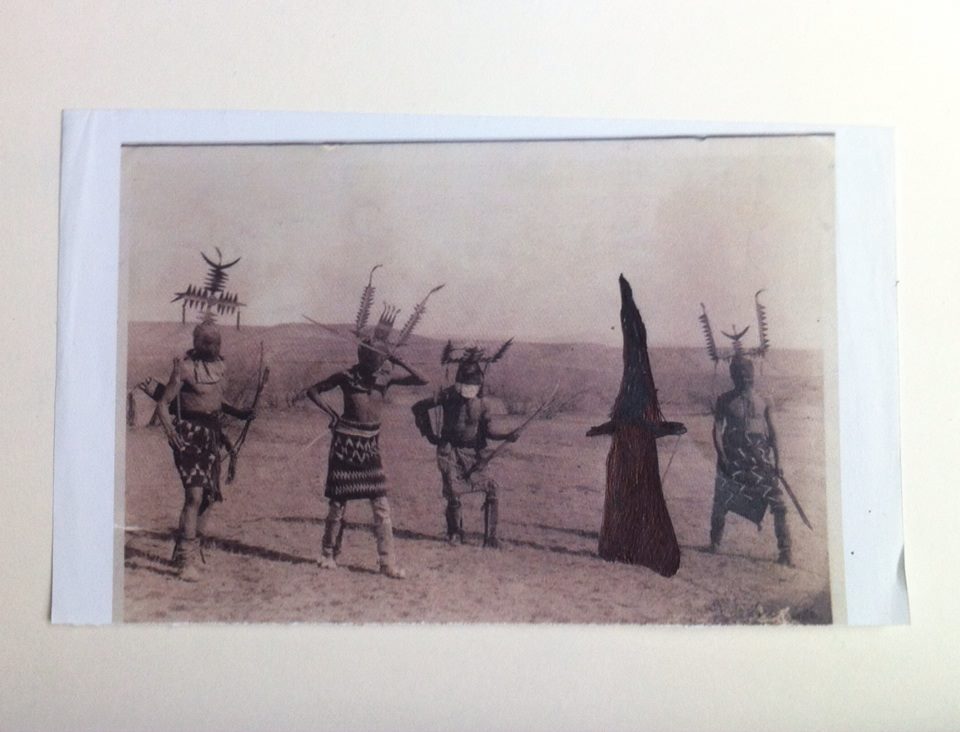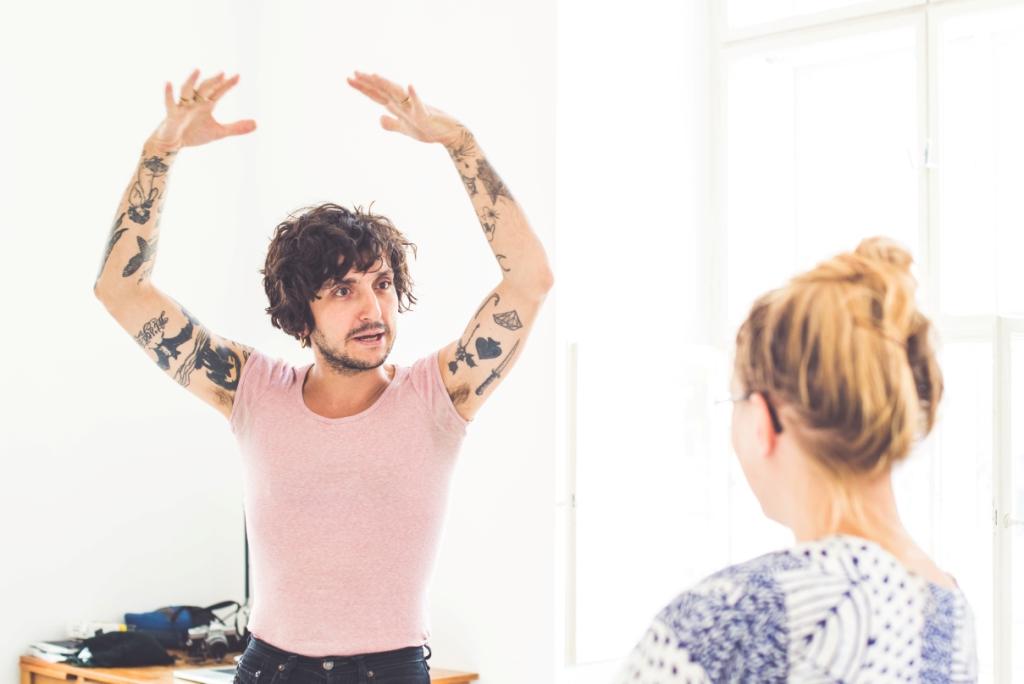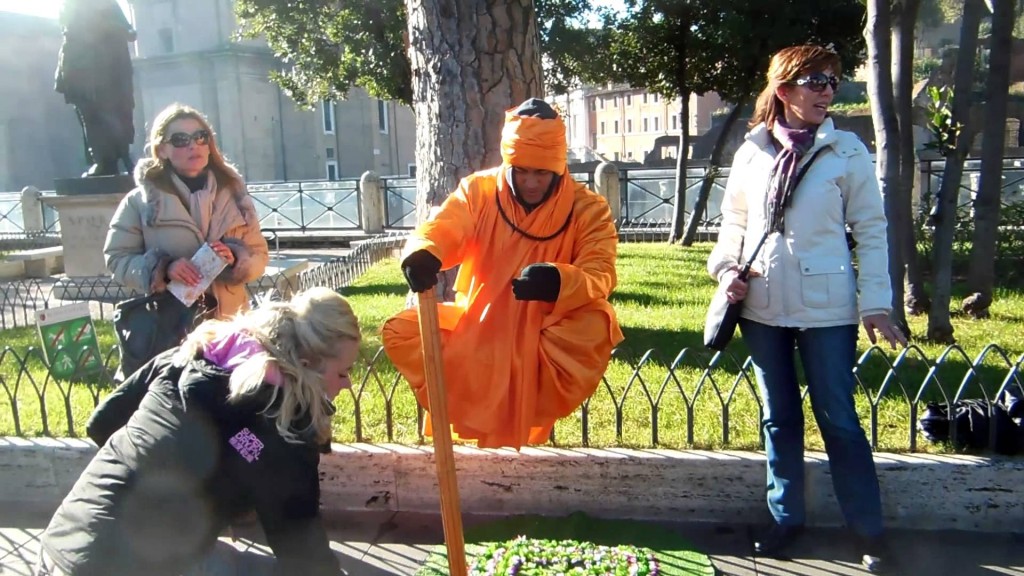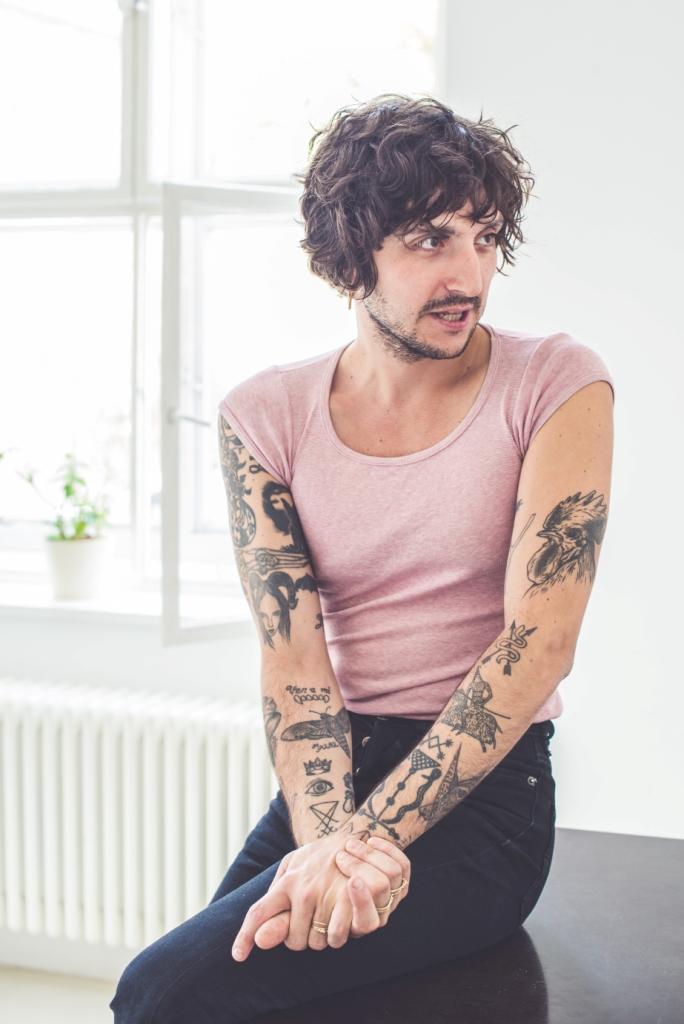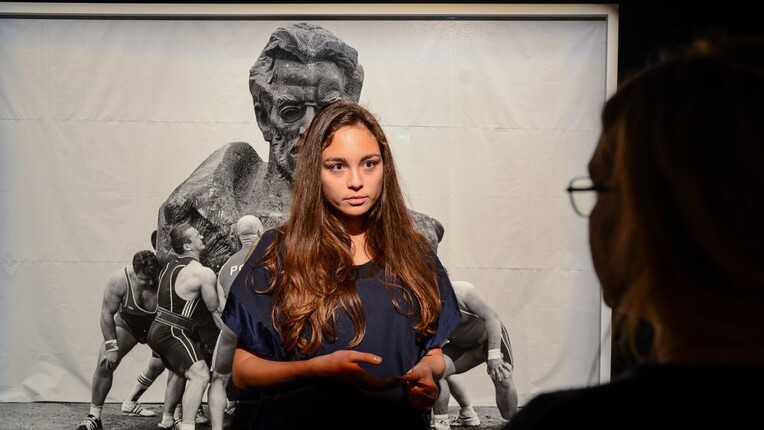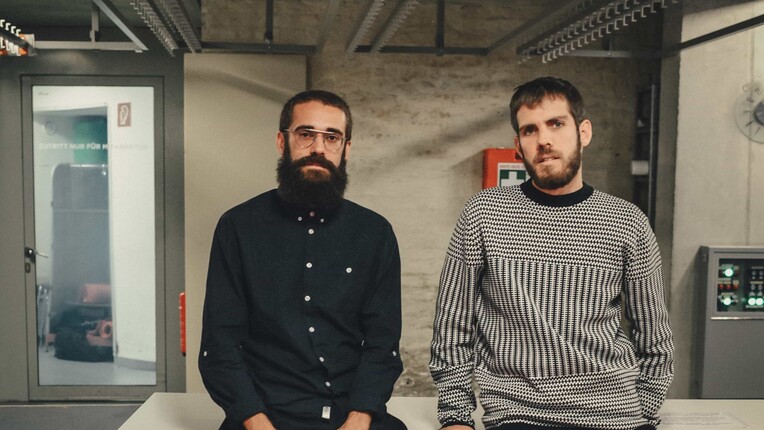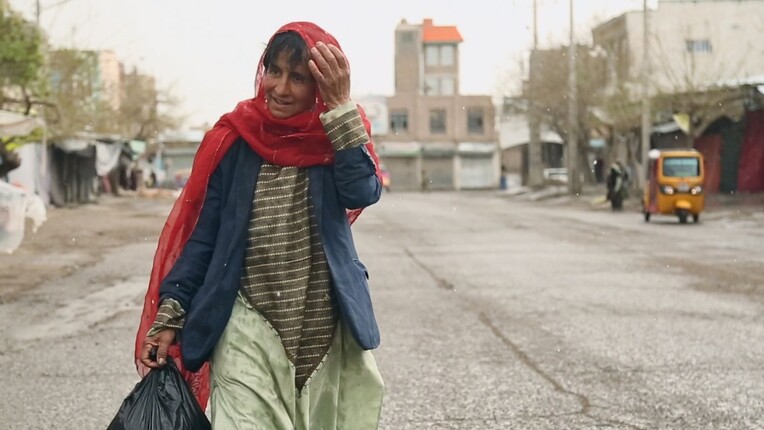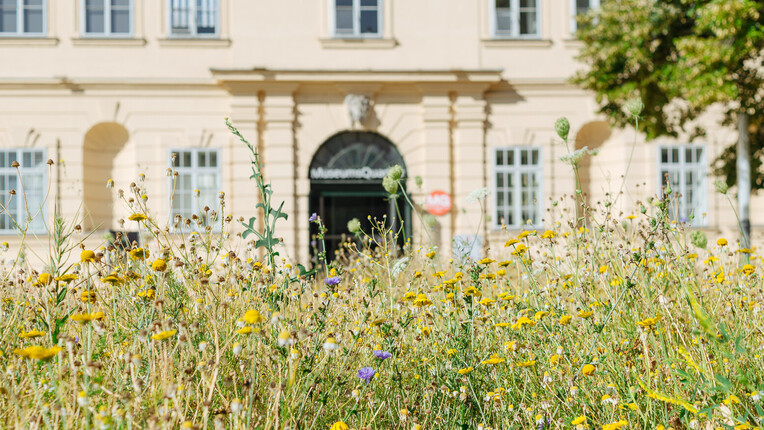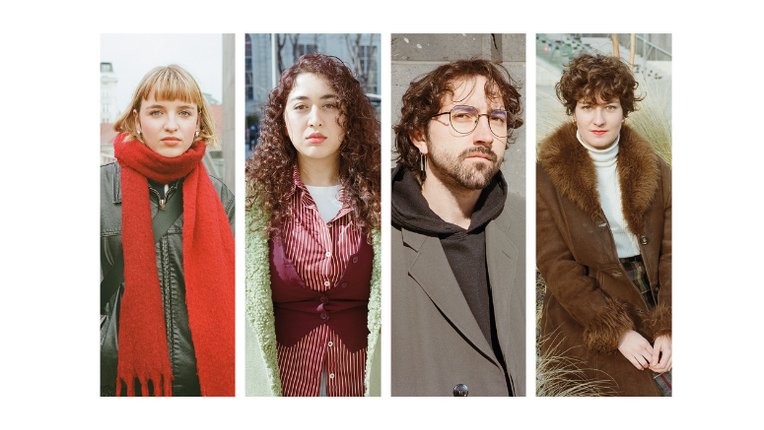
"Everybody can be the outsider."
Emiliano Maggi pronounces “art” like “heart” – no coincidence, maybe. Miraculously focused and energetic at the same time, this young Roman artist approaches art, as he says, “like a child”. His work is full of references to ancient times, but his concerns relate to the modern human being who is likely to be an outsider in a chaotic world.
Nice mask on the wall.
I love to use costumes and masks. I like to transform. In the ancient Greek drama, masks were used to tell a story. As an artist I feel that with the mask I have an instrument, a tool to tell a story.
To communicate.
To communicate, yes. That’s what art should be, always: communication. Even if art is abstract and not understandable for everybody, which is actually a beautiful thing.
What does your art talk about?
The characters I invent represent “the different”. I refer to the one who is not part of the world, the outsider. He’s a genius and the one who is not understood. He finds himself in the wrong place, in the wrong time. If you think about inquisition and all the people who got tortured and killed, “witches”, priests, explorers, researchers. They were probably amazing and very talented people, but it was the wrong time and they were living with the wrong people.
Are there lots of people who have the feeling that they were born in the wrong time and place today?
It’s still happening. I’d say it’s happening a lot. The problem is that we have such a big confusion and chaos and so many different ways of torturing.
Who are today’s outsiders?
Us. Everybody can be the outsider. Most of the people are never going to have that thought, though. That’s when art comes in. Sometimes you should use art to ask yourself questions. When you see a painting, you should not only stop and say: Nice painting, beautiful subject. People take a photo with their phones, but mostly they don’t get it. They should ask themselves: What’s going on in the painting? What’s going on with me?
Maybe this is also the fault of institutional art. I am referring to museums and galleries that tend to event-driven art presentations. Maybe that prevents deeper involvement?
I know there is something wrong with the institutions as well. It’s not only the people, but I’m sure it’s not the fault of the art piece.
Is your art work a dark work?
It’s not dark at all. It’s wide, celestial and bright. I’m connected to the past, because if I’m not connected to the past I can’t try to look at the future. I still play and work with art as a child does.
You have a close connection to Cinecittá. How come?
I love movies, I grew up with movies, movies are very important for my work. I studied at the Scuola Nazionale di Cinema in Rome. It’s the school where all the big ones studied and taught. My teacher was Piero Tosi. He is the costume designer who did IL GATTOPARDO and most of the movies by Fellini and Pasolini. He was the best person to learn from about the history of costume. I spent two years watching movies on the big screen all day. I drew every little part of any costume – from the Greek period to the the 1990s. I had to know the difference between a woman’s dress from the year 1823 and the year 1825. It’s amazing, because you discover society. It’s not only about fashion. It’s about the world’s costume. Then I worked in movies like GANGS OF NEW YORK or THE PASSION OF CHRIST. I hated it.
These are huge film productions. The job must have been well paid at least?
Yeah, but you work a lot! You work very, very hard. I never wanted to work in the movie business, I went to this school for another reason: I wanted to know how to make costumes and I wanted to bring this into my art. I wanted to understand costumes and society.
What about today’s costumes, what do they tell us about society?
Today? They suck. Jeans were an amazing achievement of the beginning of the last century. But the rest, I don’t know. I wish people could wear masks and costumes every day, on the subway, on the street. We all look and do the same. We’re really insecure, so we need to feel connected. This connection is nothing bad per se. However, we’re not connected because of strong relations between us but because we are slaves who all do the same. People look the same, but they don’t even look at each other, they don’t feel connected at all. Instead of looking at each other, they’re maybe using Tinder or something, that’s really scary.
Technology scares you?
It’s the way we use it that scares me. And we use it really badly.
How do you approach the exhibition’s topic of “Levitation”?
I designed tubular costumes made of Lycra and I put one to three persons not wearing clothes inside. I study the movements people make within those “tubes”. It’s really intimate, sometimes even sexual. When you’re inside, you see your body in a different way than in bed or in the shower, because it’s the only thing you see. At the same time nobody can see you. You’re invisible. These costumes are usually used for therapy with autistic kids. They put the child inside and ask them to play, to turn into a tree, a rock or an eagle. Through the intimate atmosphere within the costume, the kid slowly becomes more relaxed and feels free. I made the same thing for adults, because I think they need it. Most people don’t experience intimate moments anymore. In the end I take pictures, and what you can see is a (human) sculpture. It’s a complex work that combines performance, photography and sculpture.
Beyond that, you are enamored with levitating street performers?
I haven’t seen them in Vienna so far, but there are thousands of them in Rome! People love it, they take pictures, they like the trick although they know it’s a trick. They stop, but they don’t want to to uncover the trick behind it. Unlike real magic, the trick concerns anything that is fake. So I asked myself: What if I expose what is hidden and reveal the trick? Let’s make a levitation chair! It is actually called “levitation device”. It stands in the exhibition hall and you can use it. The performance on September 24th is the most important part of this work, the chair is going to be empty for the rest of the show.
What is real magic?
There’s a point where we are not able to explain something anymore and I think that’s what it is. When it comes to real magic, we still have no tools or methods to conceive an idea. Sometimes it’s so dark and deep dark and you can’t say, “No, that’s not true,” because you have no idea. So if you don’t know, don’t go too far. Leave it there.
Follow Emiliano Maggi on Instagram
Interview: Margit Mössmer
